Banos, and then on to Tena, at the Edge of the Amazon Jungle
![]()
The spine of the Andes that traverses the center of Ecuador from south to north has two rows of volcanic peaks with the Avenida de la Volcanes between them.
Following our stay in Cuenca, the city in the southern Andes, we journeyed north with stops in Alausi, to ride the Tren Ecuador over the Nariz del Diablo (Devil's Nose), and on to Riobamba where we attempted to view the great Chimborazo volcano.
From Riobamba, we traveled on to Banos where we experienced life in this small ciudad of 10,000 residents, famous for it's banos (hot springs), and Cascada Agua Santa, the patron saint that is believed to protect the city from nearby Volcan Tunguruhua.
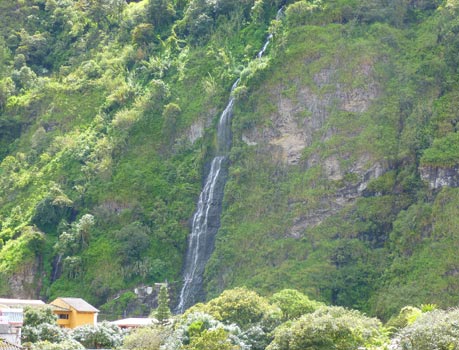
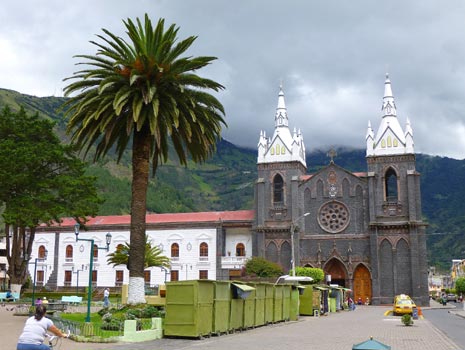
Banos was so pleasant that we relaxed there for a week, combining explorations with strolls around town, joining residents in the mercado, the iglesia, and hanging out at the pleasant cafes. We took time to catch up on writing, too.
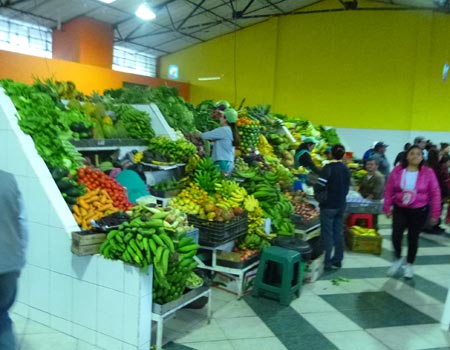
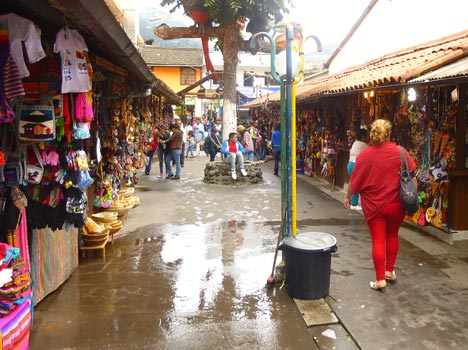
Banos is visited by international visitors who come for multitude of reasons, including volcanologists, hikers, climbers, bikers, rafters, and bridge leapers, as well as folks like us who were amazed by the dramatic scenery all around us.
To better experience this place, we took the 'Tour de las Cascadas', along the Rio Pastaza with multiple stops to view the astounding and dramatic waterfalls flowing out of the towering mountains on either side of this river carved canyon. We rode the tarabitas (cable cars) and walked across swaying suspension bridges to cross the river for better views.
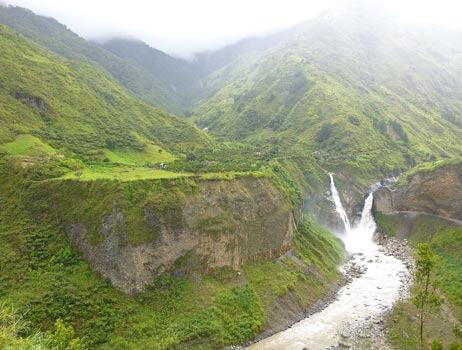
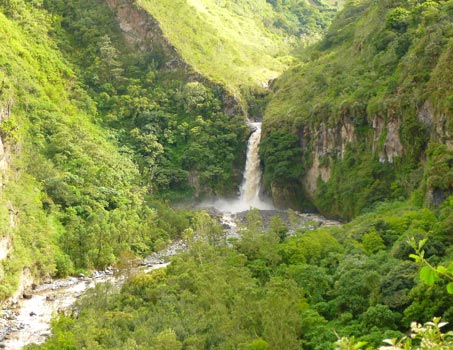
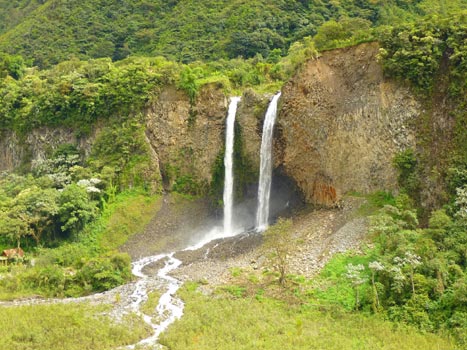
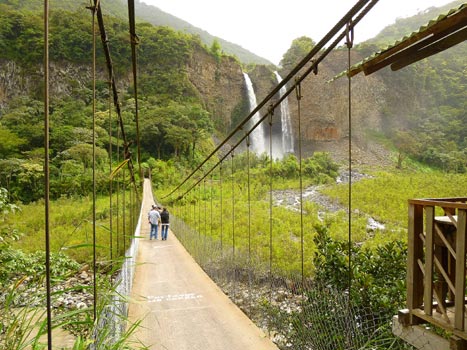
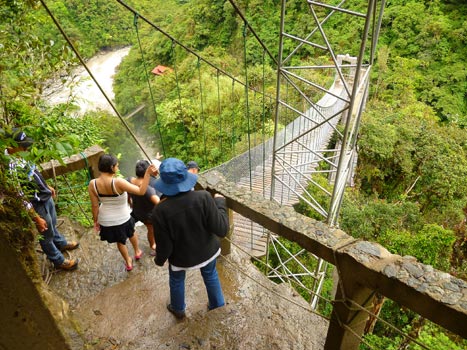
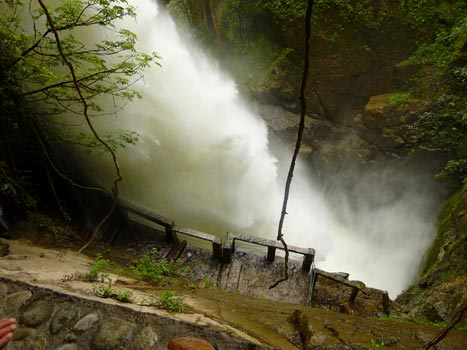
On another day, we took a taxi across the river to a viewpoint on the cliffs above the river. We were rewarded by wonderful views of Volcan Tunguruhua, spewing successive clouds of ash and dust into the blue sky. We stood and watched this spectacle for many minutes.
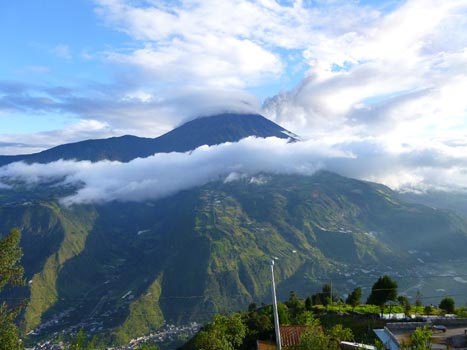
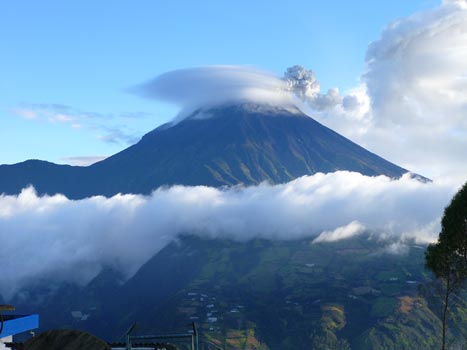
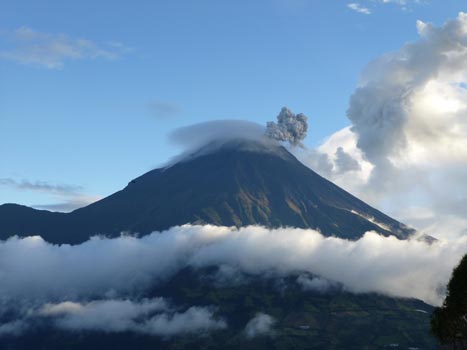
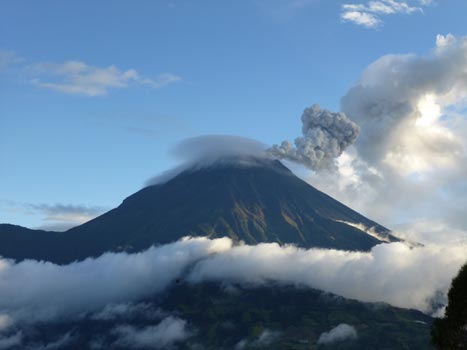
Later, form another viewpoint high above the aquasanta waterfall, we enjoyed wonderful views over the town, the nearby river gorge and the mountains on the other side of the river from which we had watched Volcan Tungaruhua.
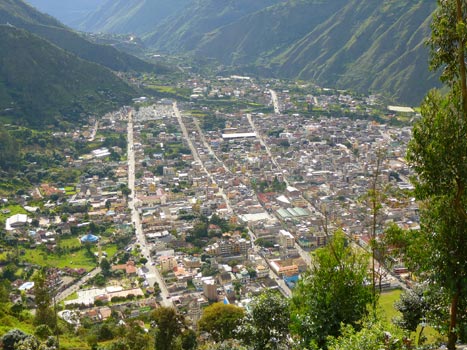
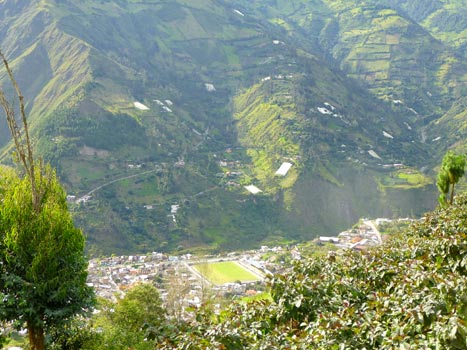
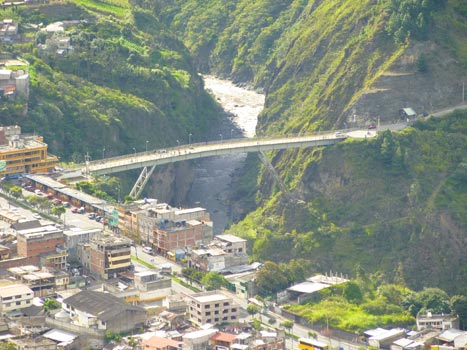
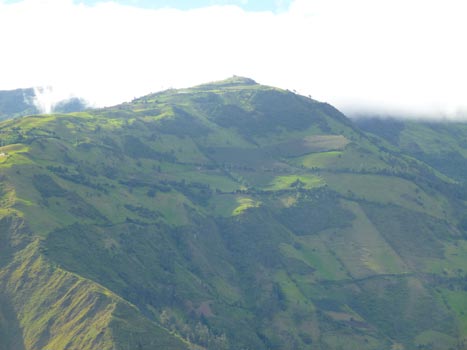
From Banos, another bus took us to Tena in the Oriente, Ecuador's Amazon basin. The journey, mostly down from an altitude of 1820 meters to 500 meters, followed the incredible gorge of the Rio Pastaza into flatter country of verdant forests.
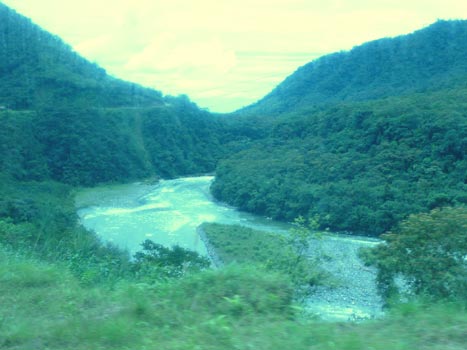
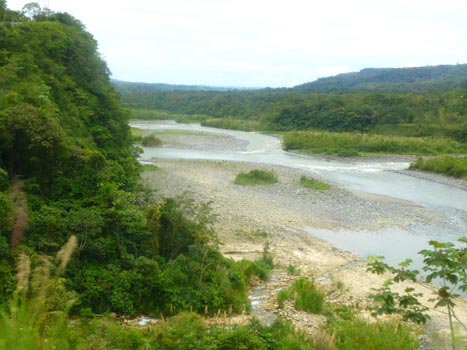
Once in Tena, on the Rio Napo, an outpost at the edge of La Selva (the jungle), we settled and searched for a tour to enable us to experience this unique ecosystem. We made arrangements with Amarongachi Tours (website at www.amarongachi.com) tours for a one day tour by pickup truck and motor canoe.
Early the next morning, we joined a couple from Canada and a woman from Bulgaria, our tour mates. We climbed into a pickup truck with benches under a roof in back and two places for us in the cab with Julio, our driver. While driving through the jungle just beyond the edge of Tena, Julio told us about the first term of President Correa. Suddenly, he stopped the truck yelling "Toucanos!" Sure enough, there were four perched high in a tree, their outsized bills unmistakable.
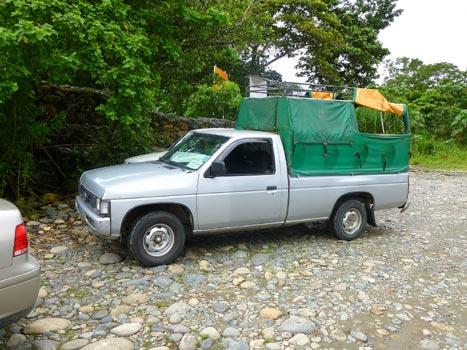
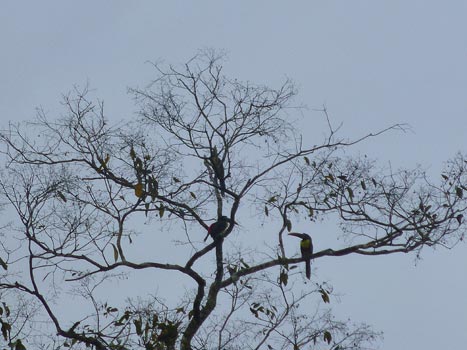
Continuing, we reached the end of the road - almost. From here, a ferry was available to float one or two vehicles across the Rio Napo, where the road continued a bit farther.
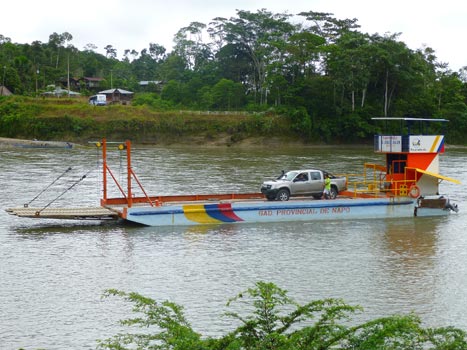
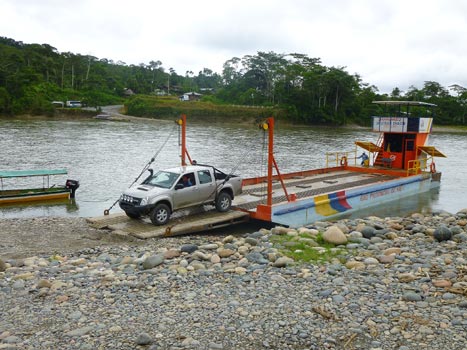
For us, this was the spot to clamber aboard a motor canoe to continue down rio, into la selva. The rio was shallow and broad, lined with rocks and verdant forest. Several times, the motorman lifted the motor so the boat could proceed and once the guide and the man from Canada jumped out to push.
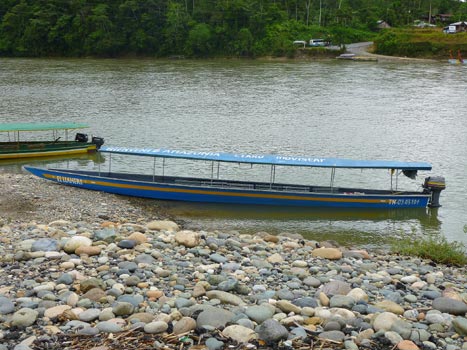
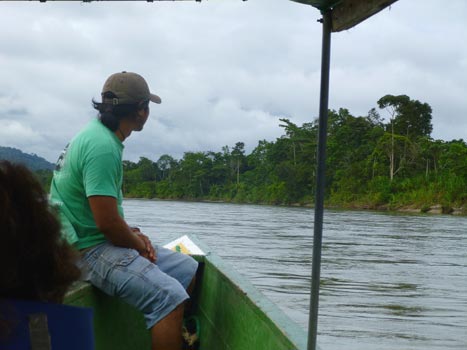
After this, we glided along, looking for birds and observing folks who lived along the river swimming, fishing and even panning for gold!
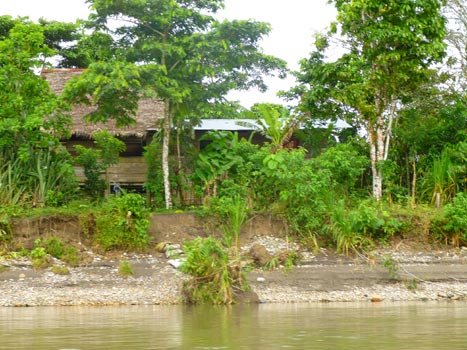
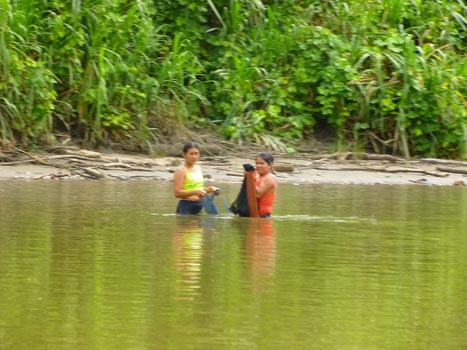
The canoe landed at the "Museo", where our guide explained how how locals devised traps to catch various animals, how cacao yields chocolate, examples of the local handicrafts, and how to shoot a blowgun (for us more practice would be essential).
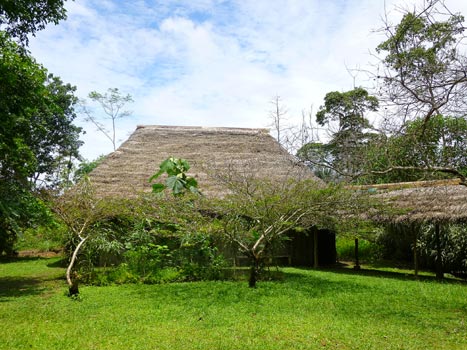
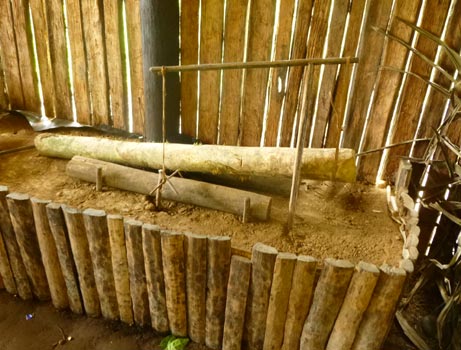
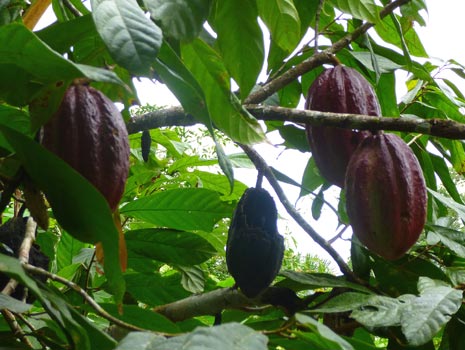
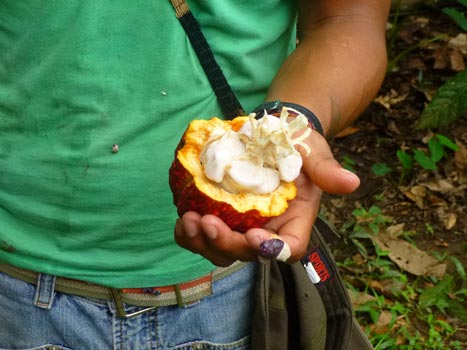
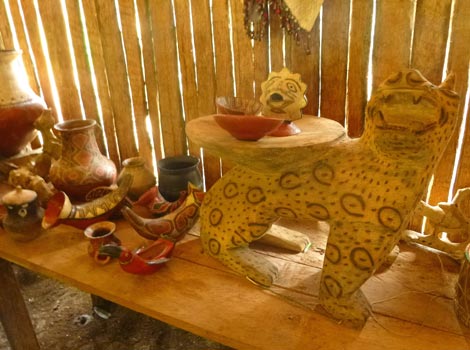
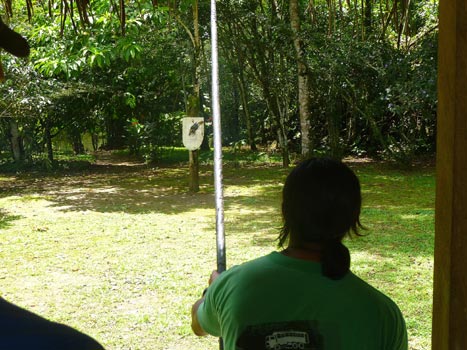
After acquiring this useful knowledge, we reboarded the canoe and proceeded farther into la selva to AmaZOOnico, an animal rehabilitation center. Here, nearly hidden in the thick trees, we were guided past enclosures where animals that had been rescued from injury or human neglect were being helped to recover with the hope of releasing them back to the wild. This close encounter with these critters living in a close approximation of their habitat enabled us to gain a greater level of comfort with the selva and its creatures.
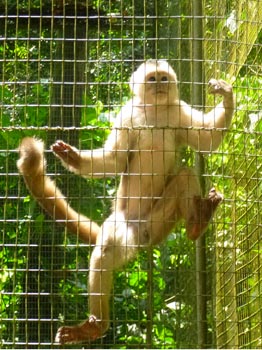
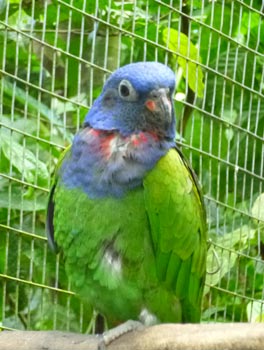
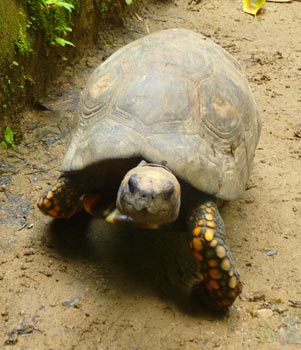
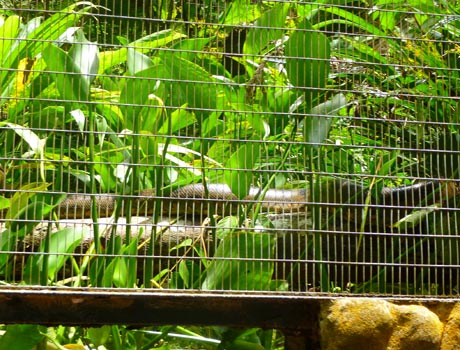

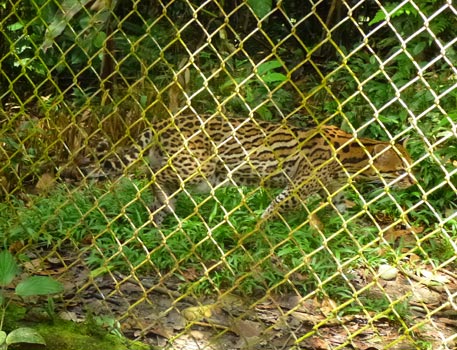
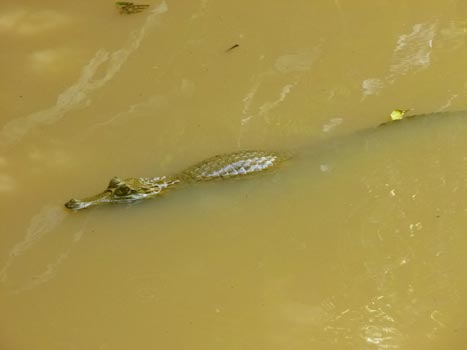
Back in the canoe, we glided back to our starting point. By now, we were relaxed and more comfortable about being away from civilization as we know it. Yet we were still aware that this was a foreboding and risky place to stay for long. As we rode, we began to hope that the rio journey would not end, but it did and we returned safely to Tena. We are thankful to Julio and his colleague for this gentle introduction to a very special region of Ecuador.
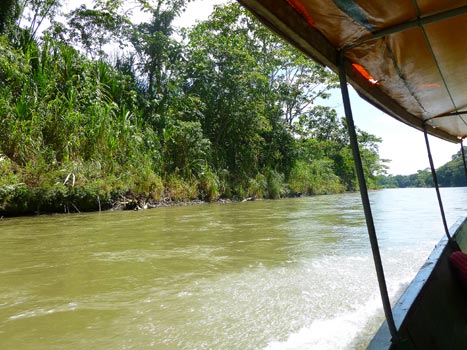
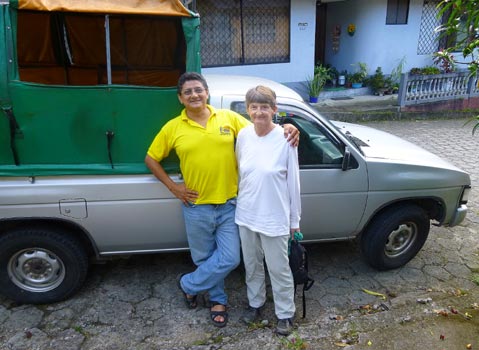
From here, we traveled by bus back up into the Andes to Quito, Ecuador's capital, for our final days in this wonderful country.
Click here to return to our Ecuador story.
Click here to return to our 'Searching the World for People Friendly places' page
![]()